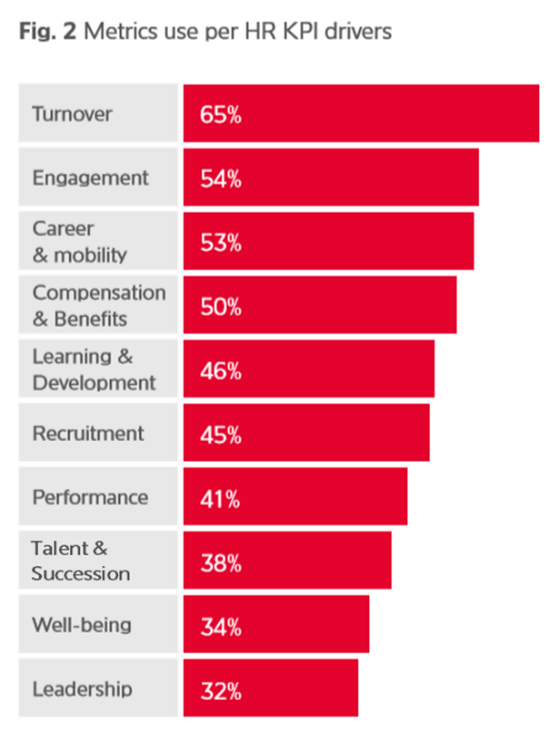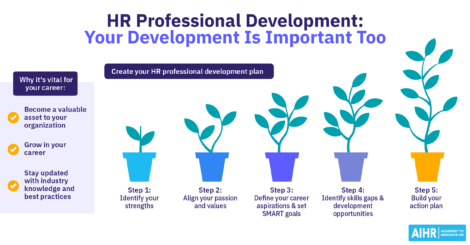Creating Value With Fact-Based HR

Imagine you gain key insights into your people by measuring and analyzing what matters to your organization. Imagine that these insights are actually used by your people in their day-to-day business and operations. And, imagine that these key insights on your people then have a profound impact on the success of your organization. Utopia, or reality? In this article, we will talk about creating value through measuring what matters and making an impact with key insights about your people.
HR’s core business: value creation
Let’s have a look at the purpose of people management, and HR in particular. Why are we here? Some think we are merely here to manage the workforce. People management is hard and HR knows people.
Others think HR exists to reduce personnel costs as much as possible, while some consider HR is instrumental to keep people happy and productive. And this is all true!
For us (and any analytics function for that matter) the purpose of sound people management is to create value, for organization, employees and eventually society at large. This is the direct result of maximizing human potential and minimizing cost at the same time.
For the organization, this creation of value could be business growth, return on investment and client satisfaction. For employees, value is often created by income, development and a sense of purpose. And similar for society, the value created could be about sustainability, well-being and high quality of life.
In the past, we have put a lot of emphasis on efficiency and cost reduction: implementing lean processes and cutting personnel costs for example. But there is a limit to what you can do to maximize efficiency and run an organization at the lowest possible cost without loss of quality of your products or services.
The real difference in creating value can be achieved by effectively utilizing human potential and there is still a world to gain here as we’ll see throughout this article.
Fact-based HR
In most organizations, the value they would like to create for the organization, people, and society is captured in their mission and strategy. In an organization’s people strategy, it should be clear how efforts in the people domain will impact an organization’s key strategic objectives.
This also gives focus on what most of us want to analyze and measure in the people domain. Always start with why you want to measure or analyze something and how it might impact your strategy and, in the end, create value for your organization and people.
Next, how and what do you measure and analyze? There are many forms of so-called fact-based HR instruments. Figure 2 shows common examples – many

of which have interdependencies and overlap.
For example, with HR metrics and KPI dashboards, you can monitor the progress of efforts in the people domain. If you want to know the impact of your efforts in the people domain you could turn to people analytics research. And if this research results in actionable findings, you can calculate the return on investment by creating business cases.
When you aim your measuring efforts at what matters most for value creation, then any form of fact-based HR will lead to valuable insights and HR impact.
But what do you actually want to measure? What matters most?
What matters to create business impact
Recently, we conducted a research on the perceived business impact of different HR drivers in collaboration with Top Employers Institute. We asked over 200 HR leaders all across the globe to choose and rank their HR drivers on potential impact.
The top 3 HR drivers perceived to have the highest impact were Leadership, Performance Management, and Engagement (Figure 3.)
Next, we asked them to provide information on how these drivers are measured in their organization.
The top 3 HR drivers measured most in general were Turnover, Engagement and Career & Mobility, while the drivers perceived as having high business

impact were measured least.
What does this research tell us? It confirms what we have experienced for the last decade: we are still not measuring what matters most to our organization and our people.
The top 3 HR drivers with the highest business impact are quite difficult to measure in terms of effectivity. Leadership effectiveness is hard to measure and capturing performance management is still one of the hardest nuts to crack for most organizations.
Engagement is an elusive topic. There are many definitions and ways of measuring it. However, ultimately, engagement is expressed in behaviors, not in opinion. Still, we measure it using subjective questionnaires.
So, the drawback with these measures is that the accuracy of their information is limited due to the complex nature of what these measures should represent. For example, how are our people feeling? What are their attributes? How are they perceived? This makes it difficult to get a grip on these HR drivers and most organizations are struggling to gain insights on these topics.
The real business value lies in the drivers that impact your organization’s key objectives. It might be wise to find more innovative ways to quantify these important topics and people analytics might be a key instrument to do just that.
Some of the frontrunners are starting to create metrics from their analytics projects on the topics that have impact – even though they are harder to measure. This will ultimately help them better fulfill their strategic objectives.
Putting insights into action
The true goal of people analytics is to initiate a change in the organization.
However, a few great analytical insights won’t change an organization; it’s the actions that follow that matter. So how do you use the insights to generate change in your organization and start creating lasting value? What do we learn from practice?
First, leverage people analytics to create meaningful information and insights from data. It is important that these insights create value for your organization. Then, these insights need to be embedded in your organization so people can actually act upon it.
Some powerful ways to do this are being described in the text box below.
To recap: What do you need to do to create more impact and value with fact-based HR? Start measuring what matters most to YOUR organization and strategic objectives. This will help to do what HR is meant to do: create value.
Written by Rob van Dijk & Tony Brugman
Tony Brugman is an HR business analyst at Bright & Company, a Dutch HR consultancy. He is researcher people strategy and people analytics and writes on HR analytics.
Weekly update
Stay up-to-date with the latest news, trends, and resources in HR
Learn more
Related articles
Are you ready for the future of HR?
Learn modern and relevant HR skills, online

















